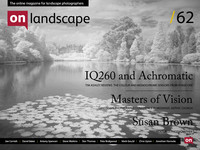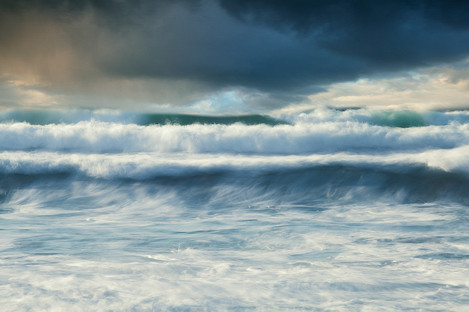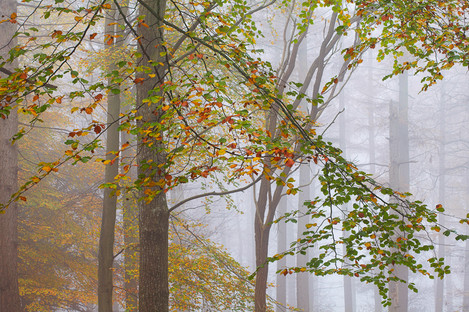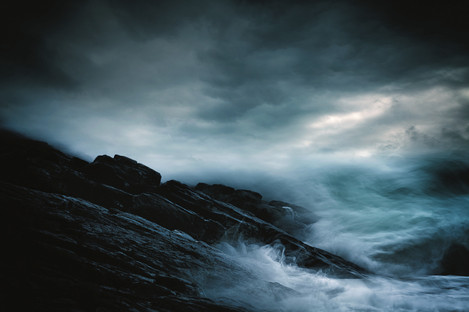Interview

Tim Parkin
Amateur Photographer who plays with big cameras and film when in between digital photographs.

David Baker
My work is showcased on my long standing photoblog: milouvision.com. I am interested in the sea, the forest and common ground. I have exhibited widely with solo and collaborative shows with photographers and other artists.
Tim: Hello David and thank you for talking to us
David: Hello Tim, thank you very much
T: First time to Masters of Vision? Have you seen the pictures before?
D: I haven’t been before, I had wanted to do so but hadn’t had the opportunity. So first time here in this frankly fantastic location. It’s superb. A real sense of history here, 900 years old I believe (ed: Click here if you want more information about Southwell)
T: We also have some epic music in the background as the organist practices their ‘chops’.
D: Yes I was talking to Joe Cornish and Pete Bridgwood and Tony Spencer walked around the corner just at the split second that the dramatic organ music started. It added to that presence of greatness
T: I think the music goes exceptionally well with your Hebridean pictures to be honest
D: Well you see, when I went on this “Landscape Rampage” trip with Pete Bridwood we had a lot of lovely conversations, that was the best part of it really, and we talked about presentation and printing and I said I’d love to have my seascapes in a slightly darkened room with a soundtrack of crashing waves and seagulls with the fizzing of the water against the stones and the knocking of the stones colliding and the whump of the waves. I would just love that – I don’t know why I just don’t do video.
T: People used to do a lot of audio-visual slideshows but you don’t see many of those anymore.
D: I think there would be something there. I have a complex relationship with the sea but I’m excited by it beyond belief.
T: A lot of your pictures this year – we have the classic woods location that has won you a couple of competitions.
D: Well that was where I used to drive through the new forest to get to the sea and I think it was mostly through people on Twitter – yourself, Dav Thomas, Paul Morton – you’ll have to excuse my memory – and others as well and my wife said “You like trees why don’t you stop on the way” and I was always “They’re the wrong sort of trees!” but I relented and started going to the forest and I chose a project for a small geographical location, mist and dawn. I’m there from home in 25 minutes but the projects come to an end now.
T: But that isn’t it for trees is it?
D: No but I want to find a new project – there is a tree graveyard all throughout the forest and I’m trying to get this relationship now between dead/fallen trees and the live ones behind. I don’t know if it’s going to work out yet – it might sound a bit pretentious.
T: I can see the compositional mirroring you’re using in the picture here on the wall.
D: That is one of the very rare moments where I have a mind for composition because normally I just go click, click, click.
With the sea you’ve got that trilinear thing going on but I know the last year I’m merging the horizon with the sea. I don’t want to see a clear horizon. I’ve done these images very very low and lay down a lot getting wet a great deal. I don’t mind that though.
T: Did the Hebridean images start one day with a full formed picture or did they develop.
D: This is the first one (Hebridean Sea III) in the Outer Hebrides in March 2012. The first time I went to the Hebrides in 2008, inspired by Tristan Campbell. He was a photoblogger with wonderful pictures and I thought, “I’ve got to go there”. I had a week. I went in February and I got five days of beautiful clear blue sky. People said “Aren’t you lucky!” – well, no. And then I went back again in March of last year and I had two days of solid rain. I stayed in Lewis but I spent almost all of my time in Harris. This one is up in Lewis I think and it’s that sound. The sound and the power. I have to have a wave stack in my images. I couldn’t believe the wind and power. I used to do a lot of ten stop ND photographs and you couldn’t do that if you wanted to. So I thought I’d just try a short’ish exposure and get down low. But I wasn’t that happy with the results and I didn’t do anything with it for six months or so. But it got quite well received and so I started to see what else I could do.
What I want about these images is that there is no sense of place. This one with the blue rocks is my favourite at the moment because I’ve made this blue ‘filter’ – I don’t see it as post production, I see it as part of the production. I’m quite obsessed with this look at the moment.
T: Do you mean a filter on the camera
P: No a filter in Photoshop but people talk about that as ‘post’ production but for me it was part of the origination of the photograph
I’m not a painter and don’t do drawing so this is how I have to create the effect I want. If I could paint then I’d hope to do this through oils or pastels.
T: So you take the picture knowing that this is the look you are after?
D: I have a rough idea of what I have got. Sometimes you have a lot of wave. If I have a good wave stack then that’s it I’m finished. But you have to have that wave stack so you need the conditions.
T: A lot of these seem to have storms in the background or at least passing squalls
D: Yes, when Pete and I went to Clachtol beach it was mad, insane wind. Spume coming up – we got rained on twice up there and I loved it.
T: It’s the weather for photography if you want to represent a location.
D: If you get wet you have to pack down a bit. This is why I’ve changed my gear now. I have two lenses and I put everything in a Billingham bag so it’s by my side and can got straight in.
T: Have you got a weatherproof camera?
D: Canon 5D mark II. But on the top of it it is all salt and stained but it still works.
T: They are quite variable I think – some people’s ‘sealing’ seems to be better than others.
D: My camera is filthy inside the viewfinder. My 17-40 lens which used to be welded to my camera has about 15 pock marks in it which are salt burns so I’ve been told. I don’t go wide anymore, I mostly do zoom work.
T: These are about 90mm are they?
D: Well the forest work is sometimes on maximum zoom. Sometimes 50mm but the image at the bottom is at 200mm.
T: This is possibly where people go wrong with forest photography. Quite often they want to use wide-angle lenses but then it’s almost impossible to make anything of the scene.
D: I started off trying to create bar codes out of trees.
T: Which images would you say you are particularly happy with then?
D: This one (Sea Fever Blue Rocks) and the original one (Hebridean Sea III) because I have such lovely memories of being there. There was a Dutch lady photographer and she had driven all the way from Holland just to come up. We had a nice chat and went our separate ways – I quite like that. I drove from Lewis to Harris and it took forty minutes and I saw five cars on the way. I’m not really a trekker – which is why I don’t really need a rucksack – and if you’ve been to some of these places in Harris you know you’re a five minute walk.
T: A last question for you – I’ve been asking everybody – who would you choose for the next Master of Vision
D: I think I would go for Paul Kenny and for his Hebridean Seascapes I’d like to see Julian Calverely. Paul Kenny’s work has something about it. Perhaps it’s just a photographic record of a sculpture maybe but I just find it has such a connection with the sea.
Pete Bridgwood and I have had conversations about this while we were away and we were trying to think of them and these were my favourites.




